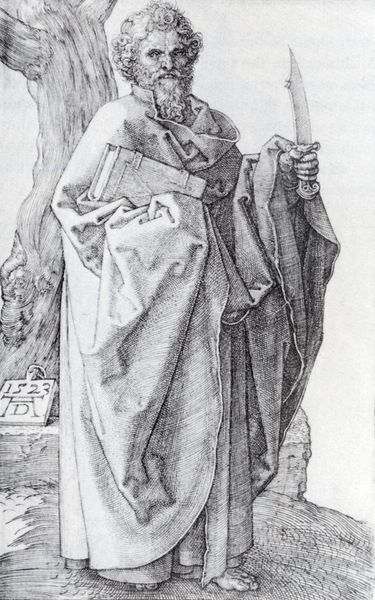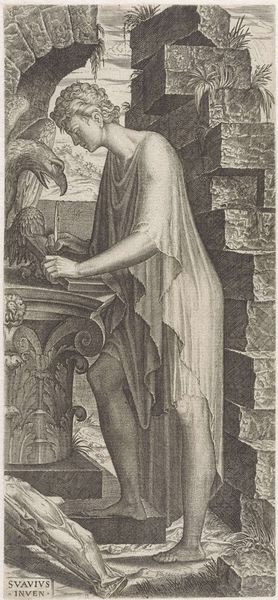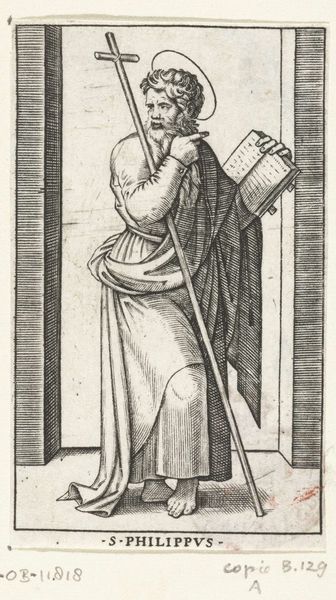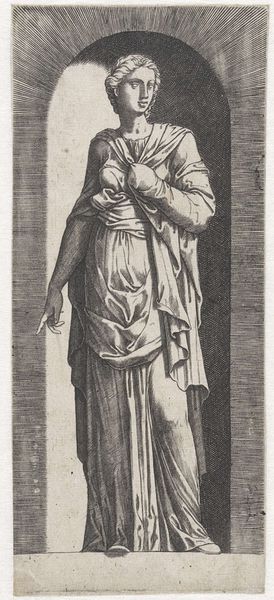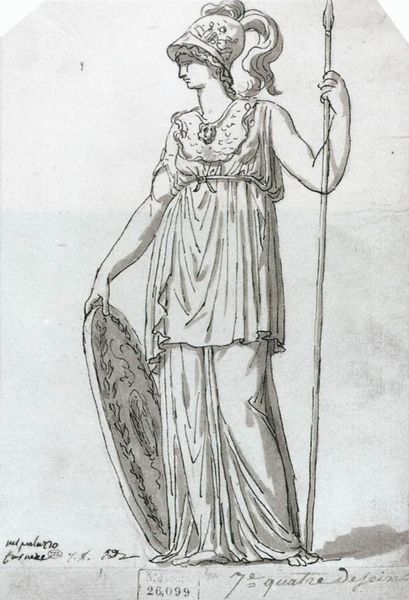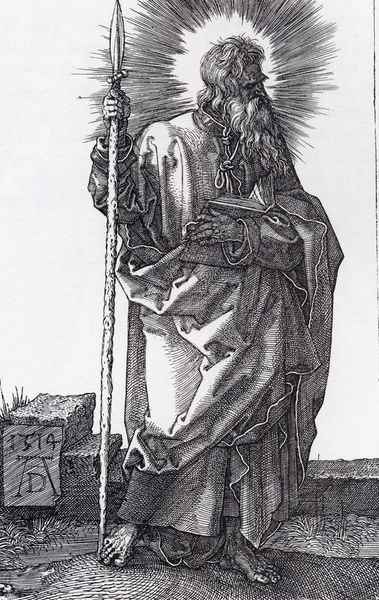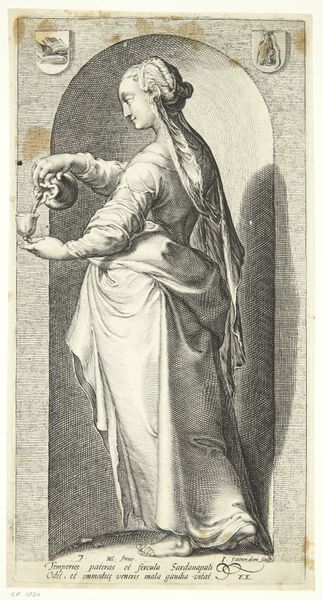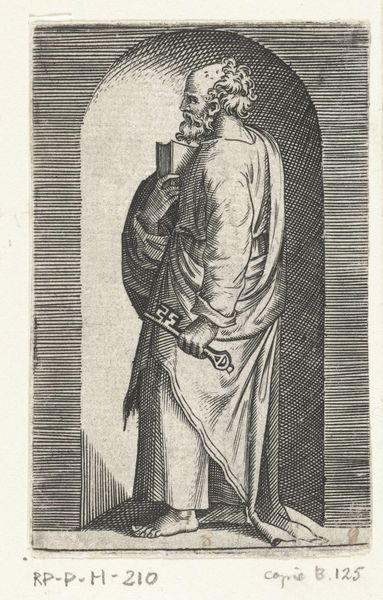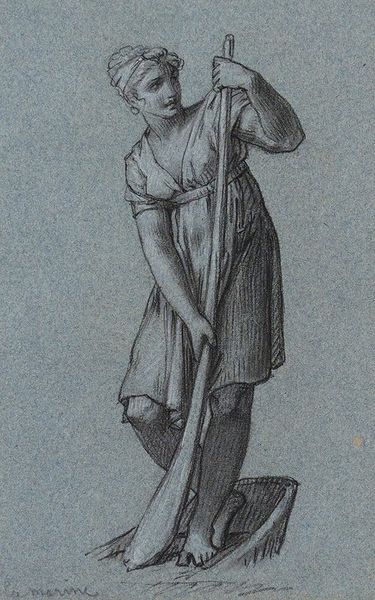
drawing, print, engraving
#
portrait
#
drawing
# print
#
figuration
#
line
#
portrait drawing
#
history-painting
#
northern-renaissance
#
engraving
Copyright: Public Domain
Curator: Before us stands "St. Barbara," an engraving by Master FVB, created sometime between 1470 and 1500. It is now part of the Metropolitan Museum of Art's collection. Editor: My immediate impression is one of stillness. The composition leads your eye directly from her face down the length of her flowing robe. It is primarily lines—fine, detailed lines. Very elegant. Curator: Indeed. It exemplifies the Northern Renaissance's engagement with classical themes and religious subjects. Saint Barbara, depicted here, was often invoked for protection against lightning and fire—making her a patron saint for those in dangerous professions like miners and artillerymen. This print would have been acquired by people within that cultural context, and widely reproduced. Editor: And structurally, the artist sets up an intriguing contrast between the soft curves of Barbara and the rigid verticality of the tower beside her, her key attribute symbolizing her imprisonment. There is so much skillful detail in the rendering of her garments. Observe how light plays across those folds. Curator: Her stance, kneeling yet upright, communicates piety but also strength. Prints like these disseminated religious iconography widely. Consider the socio-political implications of the availability of such images. What did it mean for an individual to have this representation in their home, and how might this object shape belief systems? Editor: It’s also a very sophisticated rendering of texture for a print. The texture in her elaborately patterned sleeve contrasts dramatically with the sleek smoothness of the tower behind her. This emphasizes the tangible qualities within a linear medium. Curator: Absolutely. The presence of a tower reflects her legend. Locked away by her father to preserve her from suitors, Barbara secretly converted to Christianity. A powerful commentary on familial control, religious faith, and patriarchal power structures prevalent at the time. The engraving functions, then, as more than mere decoration; it embodies significant cultural narratives. Editor: It's fascinating how much symbolic weight the artist manages to convey through such meticulous linework and contrast. Curator: A reminder of how even seemingly simple images can reveal complex socio-historical layers, prompting us to think about both the aesthetic value and cultural function of art. Editor: Precisely. Focusing on both form and context enriches our understanding, uncovering the many layers embedded within what initially appears as a simple image.
Comments
No comments
Be the first to comment and join the conversation on the ultimate creative platform.

